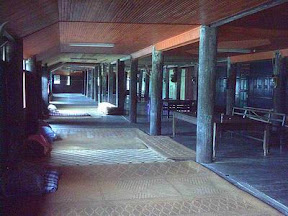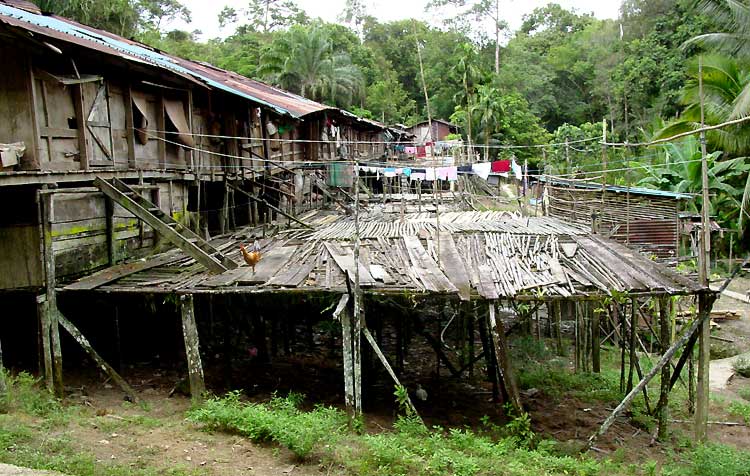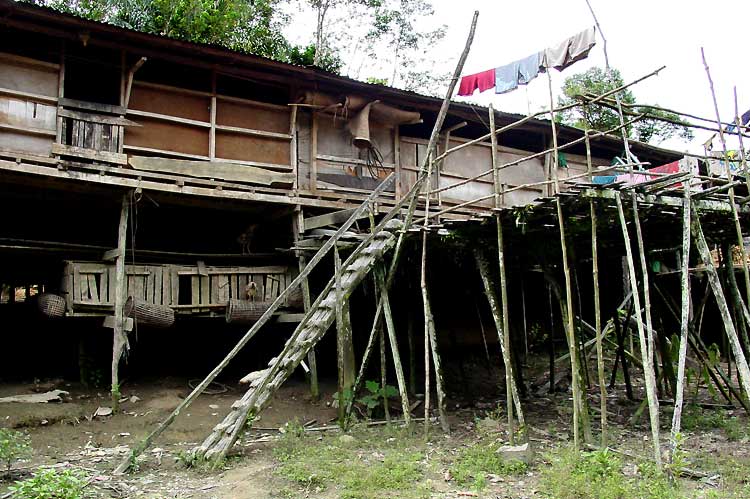
A longhouse in Sarawak; source:www.enicholl.com
"When the longhouse becomes too dilapidated, it is the responsibility of the tuai rumah (leader of the longhouse) to hold a gathering with his people to discuss about a new longhouse. If the head of each family agrees, all males and every family is asked to collect ramu (construction materials) for posts, beams, studs, planks, etc. When all the families report that they have enough ramu, the tuai rumah with the help of the tuai burung (the sage) will fix the auspicious date for the ngerembang, the clearing of the site of the longhouse."
The Tanju, the outdoor communal terrace
"A few days before that date, the tuai rumah goes into the jungle to seek the signs that will reveal the best location of the future longhouse. If the new longhouse is to be built downstream from the old house, the tuai rumah will look for the Nendak bird, to the right of his direction of travel. When he hears the call of this bird, he will uproot a small tree in that area to mark the occasion, , and he will bring home the small tree, known as the tambak burung."
"The next day, the tuai rumah enters the jungle again on a similar mission. When he hears the call of the nendak bird from his right hand side, he will again uproot a young tree to mark the spot and return with the tambak burung. Early on the third day, he again enters the jungle, this time looking for the bird on his left hand side. When he hears the call, he will again uproot a young tree and return with his last tambak burung."
The Panggau and the Ruai, communal living areas in the longhouse
"On the morning of the ngerembang, the tuai rumah will burn the tambak burung in the middle of the new site, before leading the members of the longhouse in the clearing works. When the ngerembang is finished, the families are asked to bring all the ramu that had been collected to the respective houses."
The bilik is the private realm of the family
"After the prayer, the tiang permun (the main post of the house) is placed in the ground, buried together with salt, a small piece of gold, the skin of the langgir fruit and a mumban twig (a small tree commonly found along the river banks). As soon as the longhouse is completed, the tuai rumah and the tuai burung will lead the the families into the new building. But before they finally move to their bilik (rooms), each family must build their own dapur (kitchen)."
Reference: Translated from Malay text reproduced in the Cyber Penom website, including all the photos except the first one.









